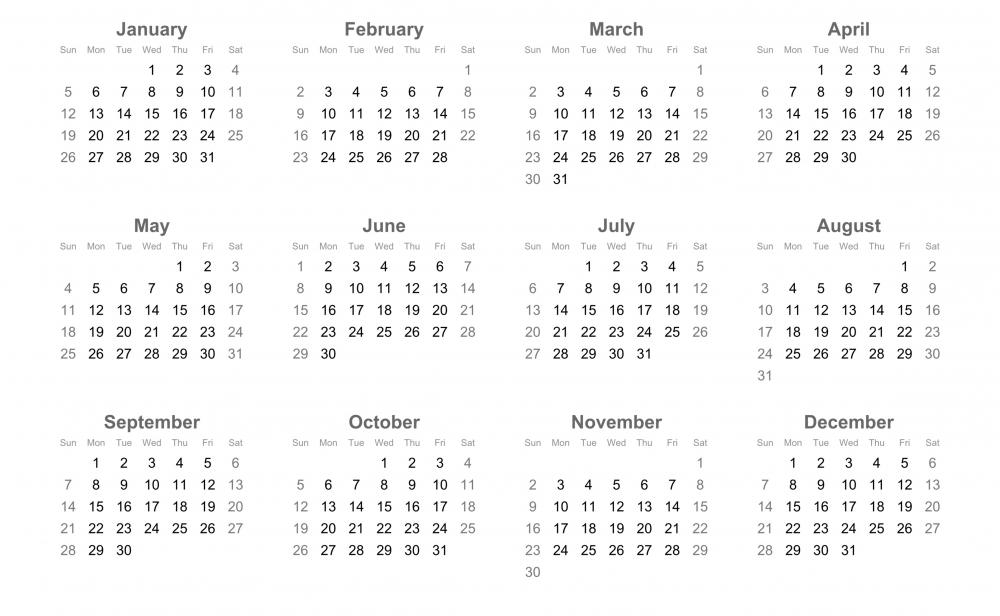The new calendar was adopted on Friday October 15 1582 during the papacy of Gregory XIII. If playback doesnt begin shortly try restarting your device.
 18 Gregorian Calendar Facts You Need To Know Calendar
18 Gregorian Calendar Facts You Need To Know Calendar
The Roman calendar introduced by Julius Caesar and subsequently known as the Julian calendar gets far closer to the solar year than any predecessor.

When was the julian calendar invented. In 1582 when Pope Gregory XIII introduced his Gregorian calendar Europe adhered to the Julian calendar first implemented by Julius Caesar in 46 BC. In 1582 when Pope Gregory XIII introduced his Gregorian calendar Europe adhered to the Julian calendar first implemented by Julius Caesar in 46 BC. In the Middle Ages most European countries used the Julian calendar and observed New Years Day on March 25.
The months were 30 or 31. The Julian calendar proposed by Julius Caesar in 46 BCE 708 AUC was a reform of the Roman calendar. The existing calendar is a lunar one with extra months slipped in from to time in an attempt to adjust it.
Since the Roman emperors system miscalculated the length of the solar year by 11 minutes the calendar had since fallen out of sync with the seasons. It was the main calendar in most of the world until Pope Gregory XIII replaced that with the Gregorian calendar in 4 October 1582. Julian calendar and lasts for 7980 years.
It was slowly adopted by Christian countries one after the other. The Gregorian calendar came into use in 1582. The Kingdom of Bohemia adopted the calendar two years later.
Videos you watch may be added to the TVs watch history and influence TV recommendations. Spain accepted the new calendar immediately followed by Spain Portugal France Poland Italy the Catholic Low Countries and Luxembourg. Where did the 12 month calendar originate.
The Julian calendar introduced by Julius Caesar in the 1st century bc was then in use and any year whose number was exactly divisible by four was designated a leap year. In 1582 when Pope Gregory XIII introduced his Gregorian calendar Europe adhered to the Julian calendar first implemented by Julius Caesar in 46 BC. Another option was to use the Julian Period system invented in the 16th century by Joseph Scaliger who combined several other calendars to come up with a.
In the Gregorian calendar introduced in 1582 and now in general use the centurial years. In 1582 Pope Gregory XIII issued a papal bull superseding the Julian with the Gregorian Calendar. Now it is the system used by virtually everyone in the world.
It was first used in 1 January 45 BCE. By the 1st century BC reform in Rome has become an evident necessity. The previous day according to the Julian calendar was Thursday October fourth.
Since the Roman emperors system. Then the solar year with the value of 365 days and 6 hours was made the basis of the calendar. Roman Catholic countries began to celebrate New Years Day on January 1st at that time.
It was invented by French Scholar Joseph Justus Scaliger in 1583 who proposed that the Julian Period starts at noon on January 1 4713 BCE. Since the Roman emperors system miscalculated the length of the solar year by 11 minutes the calendar had since fallen out of sync with the seasons. Was made 445 days long by imperial decree bringing the calendar back in step with the seasons.
Another calculation had been developed by the Alexandrian monk Annianus around the year AD 400 placing the Annunciation on 25 March AD 9 Julianeight to ten. Even with Mercedonius the Roman calendar eventually became so far off that Julius Caesar advised by the astronomer Sosigenes ordered a sweeping reform.
ads
